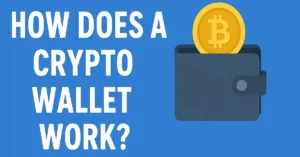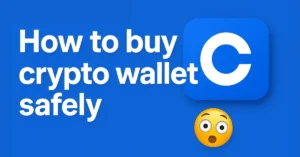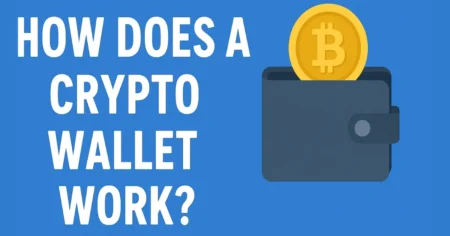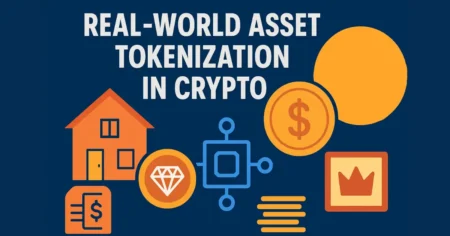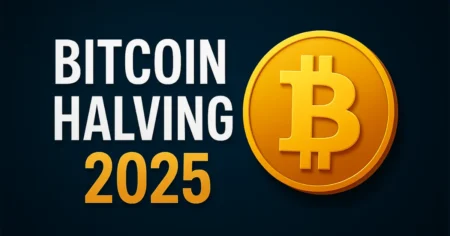Lowest fee crypto platform
Introduction
Let’s face it: crypto trading can get expensive—fast. From trading fees and spreads to withdrawal charges, the small costs can stack up like bricks. That’s why finding a crypto platform with the lowest fees isn’t just smart—it’s essential. Whether you’re a seasoned trader flipping altcoins by the hour or someone just getting started with a $100 investment, the platform you choose has a direct impact on your profits.
In 2025, crypto adoption has hit new highs, and the competition among platforms is fierce. Some are slashing fees to attract users, while others offer reward programs or fee rebates. But beware—not all “low fee” platforms are created equal. Some bury charges in the fine print, while others limit features unless you pay extra.
This guide breaks down everything you need to know—from understanding crypto trading fees to choosing the best low-fee platforms based on real experiences. I’ve tried these exchanges myself, so you’re getting more than just theoretical comparisons—you’re getting the kind of insights I wish I had starting out.
Understanding Crypto Trading Fees
What Are Crypto Trading Fees?
When you trade crypto, every transaction you make comes at a cost. These costs—commonly known as trading fees—can vary wildly from platform to platform. Typically, there are two main roles in any trade: a maker (who places an order on the book) and a taker (who matches it). The platform charges each party a fee, usually a small percentage of the total trade amount.
Fees can start as low as 0.00% (yes, that exists) and go up to 1% or more depending on the platform, your trade volume, and whether you’re using advanced features like margin or futures trading.
But here’s the kicker: those little percentages eat into your profits big time, especially if you’re making dozens of trades a week. That’s why understanding how and when fees are charged is crucial before choosing your exchange.
Types of Fees You Should Know
Not all fees are created equal. Here’s a breakdown:
- Trading Fees: Charged for executing buy/sell orders. These are split into maker and taker fees.
- Withdrawal Fees: Charged when you move your crypto to an external wallet.
- Deposit Fees: Less common but exist, especially for fiat deposits.
- Spread: The difference between the buy and sell price—some platforms make money here, even if they claim to have “zero” fees.
- Margin Fees: Interest charged on borrowed funds for leveraged trades.
Knowing these types ahead of time can save you from nasty surprises later. Always read the platform’s fee structure carefully—and yes, even the footnotes.
Factors to Consider When Choosing a Low-Fee Platform
Fee Structure Transparency
A great platform doesn’t just have low fees—it explains them clearly. I’ve come across platforms that proudly advertise 0.1% fees, only to bury additional costs in complex tier systems or hidden spreads. Look for a platform that lays out its fees in simple, understandable terms and updates them regularly. Clear documentation builds trust.
Hidden Charges to Watch Out For
Ever been hit with a high withdrawal fee you didn’t see coming? That’s more common than you’d think. Some platforms sneak in fees when you’re moving crypto off the exchange. Others charge premium prices for using credit cards or third-party payment systems.
Pro tip: Check if the platform charges different fees for different blockchain networks. Withdrawing USDT on Ethereum can be far more expensive than withdrawing on Tron (TRC-20).
Trade Volume Discounts
Many exchanges offer tiered discounts based on your 30-day trading volume. If you’re an active trader, this can be a game-changer. For instance, Binance users trading over $50,000 a month can qualify for major fee cuts. Some platforms also offer rebates or cashback when you use their native tokens (like BNB on Binance or KCS on KuCoin). The more you trade, the more you save.
Top 5 Lowest Fee Crypto Platforms in 2025
Platform 1 – Binance
Binance remains the reigning king when it comes to low fees and overall functionality. With spot trading fees starting at just 0.10% for takers and 0.075% for makers (when using BNB), it’s hard to beat. Binance also frequently runs zero-fee campaigns for specific trading pairs, which is fantastic for short-term traders looking to minimize costs.
Pros:
- Lowest standard fees in the industry
- Massive selection of coins and pairs
- Fee discounts with BNB usage
- Advanced tools for pro traders
Cons:
- KYC required for most features
- Occasional regulatory scrutiny in certain countries
My experience with Binance has been overwhelmingly positive, especially when using limit orders and BNB to cut costs further. Their app also makes it easy to track fees in real-time.
Platform 2 – KuCoin
KuCoin is often underrated, but it’s a beast when it comes to savings. KuCoin’s maker and taker fees start at 0.10% for spot trading, and using KCS tokens knocks it down by 20%. The platform also boasts a rich set of features like trading bots, staking, and lending, all with minimal fees.
Pros:
- Discounted fees using KCS tokens
- No KYC for basic features
- Margin and futures with competitive fees
Cons:
- Customer support can be slow
- Less liquidity than Binance
Personally, I love KuCoin’s user interface and low-pressure verification process. It’s a great second exchange if you’re diversifying platforms.
Platform 3 – Kraken
Kraken is one of the oldest and most trusted names in the crypto space. It’s known for its strong security protocols and transparent fee structures. For spot trading, Kraken charges 0.16% maker and 0.26% taker fees, but with higher volume, these fees drop significantly. It also offers futures trading with some of the most competitive fees in the industry—starting as low as 0.02% maker and 0.05% taker.
Pros:
- Trusted, U.S.-compliant exchange
- Transparent and scalable fee tiers
- Outstanding customer support
- Wide range of fiat deposit options
Cons:
- Slightly higher base fees than others
- Interface can be intimidating for beginners
My take? If you’re looking for a reliable long-term platform with excellent support and security, Kraken is worth it—even if it’s not the absolute cheapest at first glance. Once you hit higher volumes, the fees become very competitive.
Platform 4 – OKX
OKX has emerged as a favorite for serious traders, particularly those dabbling in derivatives. The platform’s spot trading fees are as low as 0.08% for takers and 0.06% for makers, especially if you pay with OKB (their native token). OKX also provides bonuses, rebates, and regular campaigns to help you trade more for less.
Pros:
- Excellent fee discounts via OKB
- Huge variety of trading pairs
- Supports perpetual swaps and options
- High liquidity for big trades
Cons:
- Complex interface for new users
- Heavily focused on trading, not ideal for investors
From my experience, OKX works best for day traders and futures users. Their desktop app is extremely fast, and their trading fee tiers are some of the best you’ll find in the entire industry.
Platform 5 – MEXC Global
If you’ve never heard of MEXC, don’t worry—you’re not alone. But this under-the-radar platform has some of the lowest fees in the business. MEXC currently offers zero spot trading fees for many pairs and very low futures fees, with maker at 0.00% and taker at 0.01% in many cases.
Pros:
- Zero-spot trading fees across selected pairs
- Easy onboarding and user-friendly layout
- Solid range of altcoins
- Active promotional discounts and contests
Cons:
- Not as well-known as top-tier exchanges
- Customer support needs improvement
I was surprised by how smooth my experience was on MEXC. For those hunting for the absolute lowest fees, especially on altcoins or futures, this platform deserves a close look.
Real User Experiences With These Platforms
My Personal Journey With Low-Fee Trading
When I first stepped into the crypto world back in 2018, I had no idea how trading fees could quietly chip away at my gains. I started on Coinbase, mainly because it was beginner-friendly, but after a few months, I noticed that my portfolio wasn’t growing as fast as I expected—even when the market was up. The culprit? Fees. Every buy, sell, and withdrawal took a slice of my profits.
That’s when I started digging into low-fee exchanges. I switched to Binance, and immediately the difference was night and day. Instead of paying 1.5% per trade like on Coinbase, I was now paying just 0.075% using BNB. That alone made my trading way more efficient.
Later, I gave KuCoin a try. I liked its flexibility—no mandatory KYC, access to new tokens early, and additional discounts with KCS. Sure, the interface wasn’t as polished as Binance, but the savings made it worth it. And when I started dabbling in futures, I explored OKX and MEXC. OKX quickly became my go-to for leveraged trading due to their ultra-competitive futures fees.
What I’ve learned is this: low fees alone don’t make or break your experience. But they do give you a crucial edge—especially if you trade actively. Platforms like Kraken, though slightly more expensive, offer reliability and unmatched security. And for smaller altcoin trades, MEXC is a hidden gem.
Over the years, I’ve juggled all these platforms depending on what I was trading. My advice? Don’t stick to just one exchange. Use them for what they’re best at and optimize your trades accordingly.
Community Feedback From Reddit, Twitter, and Forums
I’ve spent hours digging through Reddit threads, Discord chats, and Twitter spaces just to see what the broader community says. And it’s fascinating how often fees come up. Most seasoned traders avoid platforms like Coinbase or Bitstamp due to high fees. Instead, they flock to Binance, KuCoin, and MEXC for daily trades.
One Redditor described MEXC as “the Robinhood of crypto—cheap, quick, and aggressive.” Others appreciate Kraken’s transparency, especially during volatile markets when uptime and order execution are critical.
Twitter users often rave about Binance’s regular “zero-fee” promos on major pairs like BTC/ETH. And let’s not forget KuCoin’s referral program, which gets frequent love in Telegram groups and forums.
In short, the crowd consensus matches my personal experience: If you want to stay profitable, especially in a bear market, cutting down on fees is one of the smartest things you can do.
How to Save More on Crypto Trading Fees
Use Native Tokens for Fee Discounts (BNB, KCS)
Almost every major exchange now has a native token—and they reward you for using it. Binance has BNB, KuCoin has KCS, OKX has OKB, and so on. Holding and using these tokens can reduce your trading fees by up to 25% or more.
For example:
- On Binance, paying with BNB gives you an instant 25% discount on trading fees.
- KuCoin users can activate a similar discount using KCS.
- OKX offers tiered benefits with OKB, and you can even unlock higher VIP levels if you hold enough.
- These tokens often come with additional perks too, like early access to token sales, staking rewards, and airdrops.
But here’s a tip: Don’t just buy the token blindly. Make sure you calculate whether the discount you’ll receive offsets any potential downside if the token’s price falls. That said, if you’re actively trading, the savings often outweigh the risks.
Increase Trading Volume
Most platforms reward loyalty and volume. The more you trade, the lower your fees drop. This is especially true for Binance, Kraken, and OKX. For example, once you hit $50,000 or more in 30-day volume, you could qualify for up to 50% off standard fees.
Even if you’re not a whale, you can still benefit by consolidating your trades or focusing on a single platform to accumulate volume. Some users even pool volume through family accounts to meet thresholds faster.
Participate in Referral or Loyalty Programs
Many exchanges offer robust referral systems. Binance, KuCoin, MEXC, and others give up to 20-50% commission when your referrals trade—and often give you discounts too. That’s basically earning back some of your fees through passive rewards.
There are also loyalty programs and trading competitions where high-volume traders win fee rebates, bonuses, and even crypto airdrops. KuCoin’s “Trading Arena” and OKX’s VIP events are perfect examples. Stay active, stay consistent, and you’ll save (and possibly earn) more.
Comparing Fee Structures – A Quick Table
Spot Trading Fee Comparison
| Exchange | Maker Fee | Taker Fee | Discount with Token |
|---|---|---|---|
| Binance | 0.10% | 0.10% | 0.075% with BNB |
| KuCoin | 0.10% | 0.10% | 0.08% with KCS |
| Kraken | 0.16% | 0.26% | Up to 0.00% with volume |
| OKX | 0.08% | 0.10% | 0.06% with OKB |
| MEXC | 0.00% | 0.00% | Already 0% |
Futures Trading Fee Comparison
| Exchange | Maker Fee | Taker Fee |
|---|---|---|
| Binance | 0.02% | 0.04% |
| KuCoin | 0.02% | 0.06% |
| Kraken | 0.02% | 0.05% |
| OKX | 0.02% | 0.05% |
| MEXC | 0.00% | 0.01% |
Withdrawal Fee Breakdown
| Asset | Binance | KuCoin | Kraken | OKX | MEXC |
|---|---|---|---|---|---|
| BTC | ~0.0002 | ~0.0005 | ~0.00015 | ~0.0002 | ~0.0003 |
| ETH | ~0.001 | ~0.005 | ~0.003 | ~0.001 | ~0.001 |
| USDT (TRC20) | ~1 | ~1 | ~1 | ~1 | ~0.5 |
Risks of Prioritizing Low Fees Only
Security Compromises
It’s tempting to chase platforms with zero or ultra-low trading fees, but sometimes, you get what you pay for. One of the biggest risks of prioritizing low fees is compromising on security. A platform might offer rock-bottom costs but lack proper safeguards like cold wallet storage, 2FA authentication, or regular audits. And in the world of crypto, one major hack can wipe out your entire balance—permanently.
For example, lesser-known platforms that pop up offering 0% fees may not have a long track record or the user base to back them up. They might be missing key compliance protocols or operate in jurisdictions with weak regulatory oversight. That means if things go south, you’re pretty much on your own.
Always vet a platform’s security history before making a deposit. Look for:
- ISO/IEC 27001 certification
- Bug bounty programs
- Cold/hot wallet segregation
- Multi-sig withdrawals
Security first, savings second—because saving a few bucks isn’t worth losing your entire portfolio.
Poor Customer Support or Downtime
Another hidden danger with low-fee platforms? Terrible customer service. I’ve used exchanges that took over 72 hours to respond to support tickets—even when it was about locked funds or KYC issues. And during bull runs or network congestion, these platforms often go down just when you need them most.
Platforms like Kraken and Binance invest heavily in uptime and support. MEXC and KuCoin are catching up, but still have room for improvement. Don’t underestimate how frustrating it can be to get stuck in a transaction limbo when you’re trying to make a quick move.
Low fees are great, but only if the platform stays online, executes trades quickly, and helps you when things go wrong.
What’s the Best Crypto Platform for You?
Traders vs. Investors – Fee Sensitivity
Your ideal platform depends heavily on how you engage with crypto. Active traders, who may execute dozens of trades a day, are naturally more sensitive to fees than long-term investors who might only buy and hold a few times a year.
If you’re a trader, platforms like Binance, KuCoin, and OKX are excellent. They offer tight spreads, fast order execution, and fee discounts that scale with volume. Their interfaces are also geared toward technical analysis and quick decision-making.
If you’re an investor, Kraken might be more your style. Security, ease of use, and regulatory compliance become more important than shaving off a fraction of a percent on trading fees. You might trade less, but you’ll want your assets safe and easily accessible.
Evaluate your behavior honestly. Are you constantly checking charts? Go for the platform with better tools and lower fees. Prefer a buy-and-hold strategy? Prioritize trust and stability.
What Kind of Crypto Trader Are You?
Here’s a quick self-assessment:
- Scalper/Day Trader: Needs ultra-low fees, high liquidity, fast API access – Try Binance or OKX.
- Swing Trader: Uses technical analysis for medium-term trades – KuCoin fits well.
- Investor/Hodler: Prioritizes security, fiat support, and simple UI – Kraken is ideal.
- DeFi Enthusiast: Might prefer using centralized exchanges just to bridge assets – Look at platforms with low withdrawal fees like MEXC.
Choosing the right platform isn’t about finding “the best” one—it’s about finding the best one for you.
Expert Tips for Reducing Crypto Trading Costs
Timing Trades
Just like airlines raise prices during the holidays, crypto platforms may charge more in indirect ways when the network is congested. Ethereum gas fees, for instance, spike during high-traffic times. So, timing your trades during off-peak hours can save on both exchange and blockchain fees.
Early mornings (UTC time) often have lower volumes and fees. Also, avoiding weekends—when many traders cash out—can mean fewer surprises.
Using Limit Orders Instead of Market Orders
Market orders are fast, but they often cost more because they trigger immediate trades at the best available price—which isn’t always great. These usually make you a taker, meaning you pay the higher end of the fee spectrum.
Limit orders, on the other hand, allow you to specify the price you’re willing to pay or receive. These orders often make you a maker, meaning lower fees and sometimes even rebates on platforms like Binance and KuCoin.
Smart trading isn’t just about the asset you pick—it’s also about how you place your order.
Trading During Low Network Congestion
Blockchains like Ethereum and Bitcoin experience fee spikes during times of high activity. Platforms often pass those fees on to you—especially for withdrawals. Use tools like Etherscan’s Gas Tracker or Mempool.space to find low-cost windows.
Also, consider using Layer 2 networks or alternative chains (like Arbitrum, Polygon, or TRON) for transactions. Platforms like Binance and OKX allow you to choose your withdrawal network—pick the one with the lowest cost.
Pro tip: Always double-check withdrawal network fees before confirming. You’d be surprised how often users pay 5x more just because they didn’t notice the default network selected.
Future Trends in Crypto Platform Fees
Race to Zero Fees
Exchanges are in a heated battle for market share—and fees are the first battleground. More and more platforms are offering zero-fee trading for specific pairs (like BTC/USD or ETH/USDT) to lure users. MEXC, for instance, made zero fees a permanent feature on many pairs, not just a promo.
But how do they make money? Some rely on spreads or promote other products like futures, staking, or loans. Others count on you becoming a loyal user who eventually upgrades to premium features.
Expect even more platforms to adopt zero-fee models in the future. But be cautious—look beyond the headline. If a platform cuts fees, they might be increasing spreads or monetizing in less obvious ways.
Revenue Shifting to Premium Features or Staking
As fees shrink, platforms are looking for new revenue streams. Subscription models, advanced trading tools, staking-as-a-service, and margin loans are becoming more common. Think of them like the “freemium” model in software.
You may pay zero fees for trades, but get charged for:
- Priority support
- Higher withdrawal limits
- Advanced charting or algorithmic tools
Platforms like Kraken and Binance are already rolling these features out. In time, crypto exchanges might look more like brokerages—with free basic trading but monetized add-ons.
Conclusion
Finding the lowest fee crypto platform isn’t just about chasing numbers—it’s about understanding how those numbers affect your actual profits, trading behavior, and long-term strategy. From Binance’s powerhouse offerings and KuCoin’s hidden discounts to Kraken’s security-first model and MEXC’s zero-fee push, there’s a platform out there for everyone.
But don’t stop at surface-level fees. Factor in withdrawal costs, token discounts, volume rebates, and trading habits. The smartest traders are the ones who optimize every layer—from the platform to the strategy.
Start small. Compare. Test. And keep your fees low so your profits can soar.
FAQs
Which platform has the absolute lowest trading fees?
MEXC currently leads with zero spot trading fees and extremely low futures fees, but Binance and OKX are close competitors with their token-based discounts.
Are zero-fee platforms safe?
Not always. Some zero-fee platforms cut corners on security or support. Always check the platform’s reputation, history, and user reviews before depositing large amounts.
How can I reduce my crypto withdrawal fees?
Use networks with lower transaction costs like TRC-20 or BSC. Also, consolidate withdrawals and avoid peak times to save more.
Do fees differ for spot and futures trading?
Yes. Spot fees are generally higher for beginners, while futures fees can be much lower, especially for makers. Each platform has its own tiered system.
What is the role of exchange tokens in reducing fees?
Exchange tokens like BNB (Binance), KCS (KuCoin), and OKB (OKX) offer fee discounts, priority services, and staking benefits. Holding them can significantly reduce your trading costs.
Also, read
- What is a Crypto Wallet and How Does It Work? – Coinsify
- 10 Crypto Terms Every Beginner Must Know – Coinsify
- What is Blockchain Technology – Complete Guide – Coinsify
- How to Buy Crypto Safely in 2025 – Complete Guide – Coinsify
- Bitcoin vs Ethereum: Key Differences Explained – Complete Guide
- Ultimate Blockchain Glossary: Learn Blockchain Terms Easily
- How to Buy Bitcoin Safely (Complete Beginner’s Guide)
- Top 10 Crypto Wallets for Beginners (2025 Edition)
- What is Cryptocurrency? A Beginner-Friendly Guide (2025)
